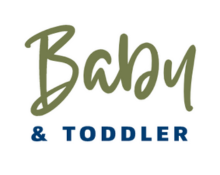
The first feed, also known as the first breastfeeding session, is an important moment for both you and your newborn baby. It’s a time for bonding, establishing breastfeeding, and ensuring your baby receives the nourishment they need. Here are some key points to keep in mind for the first feed:
Timing: The first feed ideally takes place within the first hour after birth. This early initiation of breastfeeding helps stimulate milk production and allows your baby to benefit from colostrum, the nutrient-rich first milk.
Skin-to-skin contact: Start by placing your baby skin-to-skin on your chest or abdomen. Skin-to-skin contact helps regulate your baby’s body temperature, promotes bonding, and triggers their instinct to seek the breast.
Positioning: Find a comfortable position to breastfeed. You can use the cradle hold, cross-cradle hold, football hold, or laid-back position, as mentioned earlier. Experiment with different positions to see what works best for you and your baby.
Latching: Ensure a proper latch by guiding your baby’s mouth to your breast. Wait for your baby to open their mouth wide and then bring them quickly and firmly to the breast, ensuring they take in a good portion of the areola along with the nipple. Ask your nurse or midwife to assist and check the latch.
Support: Use your free hand to support your breast if needed, to ensure your baby has easy access to the nipple and can latch effectively. You can gently compress the breast to help your baby maintain a deep latch and ensure they are getting enough milk.
Observe for feeding cues: Watch for signs that your baby is actively nursing, such as rhythmic sucking and swallowing, relaxed facial expressions, and rounded cheeks. You may also hear soft sounds of swallowing.
Allow for breaks: Babies may need breaks during a feed to rest and catch their breath. Offer a burp or a moment to rest before continuing with the feed.
Feed on demand: During the early days, it’s important to breastfeed your baby on demand. This means allowing your baby to nurse whenever they show signs of hunger, which may be as often as 8 to 12 times a day.
Remember, breastfeeding is a learning process for both you and your baby. It may take a few attempts to establish a comfortable and effective latch. Don’t hesitate to seek support from a lactation consultant or healthcare professional if you have concerns or questions about breastfeeding. They can provide guidance and support to ensure a successful breastfeeding journey.
